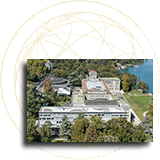UNDERSTANDING THE WTO:
THE AGREEMENTS
Textiles: back in the mainstream
Textiles, like agriculture, was one of the hardest-fought issues in the WTO, as it was in the former GATT system. It has now completed fundamental change under a 10-year schedule agreed in the Uruguay Round. The system of import quotas that dominated the trade since the early 1960s have now been phased out.
From 1974 until the end of the Uruguay Round, the trade was governed by the Multifibre Arrangement (MFA). This was a framework for bilateral agreements or unilateral actions that established quotas limiting imports into countries whose domestic industries were facing serious damage from rapidly increasing imports.
The quotas were the most visible feature. They conflicted with GATT抯 general preference for customs tariffs instead of measures that restrict quantities. They were also exceptions to the GATT principle of treating all trading partners equally because they specified how much the importing country was going to accept from individual exporting countries.
Since 1995, the WTO抯 Agreement on Textiles and Clothing (ATC) took over from the Mulltifibre Arrangement. By 1 January 2005, the sector was fully integrated into normal GATT rules. In particular, the quotas came to an end, and importing countries are no longer be able to discriminate between exporters. The Agreement on Textiles and Clothing no longer exists: it抯 the only WTO agreement that had self-destruction built in.
back to top
Integration: returning products gradually to GATT rules
Textiles and clothing products were returned to GATT rules over the 10-year period. This happened gradually, in four steps, to allow time for both importers and exporters to adjust to the new situation. Some of these products were previously under quotas. Any quotas that were in place on 31 December 1994 were carried over into the new agreement. For products that had quotas, the result of integration into GATT was the removal of these quotas.
The agreement stated the percentage of products that had to be brought under GATT rules at each step. If any of these products came under quotas, then the quotas had to be removed at the same time. The percentages were applied to the importing country抯 textiles and clothing trade levels in 1990. The agreement also said the quantities of imports permitted under the quotas had to grow annually, and that the rate of expansion had to increase at each stage. How fast that expansion would be was set out in a formula based on the growth rate that existed under the old Multifibre Arrangement (see table).
|
Four steps over 10 years back to top The schedule for freeing textiles and garments products from import quotas (and returning them to GATT rules), and how fast remaining quotas had to be expanded. The example is based on the commonly-used 6% annual expansion rate of the old Multifibre Arrangement. In practice, the rates used under the MFA varied from product to product. |
||
|
Step |
Percentage of products |
Percentage of products |
|
Step 1: |
16% |
6.96% |
|
Step 2: |
17% |
8.7% |
|
Step 3: |
18% |
11.05% |
|
Step 4: |
49% |
No quotas left |
|
The actual formula for import growth under quotas
was: |
||
Products brought under GATT rules
at each of the first three stages had to cover the four main types of
textiles and clothing: tops and yarns; fabrics; made-up textile
products; and clothing. Any other restrictions that did not come under
the Multifibre Arrangement and did not conform with regular WTO
agreements by 1996 had to be made to conform or be phased out by 2005.
If further cases of damage to the industry arose during the transition, the agreement allowed additional restrictions to be imposed temporarily under strict conditions. These 搕ransitional safeguards?were not the same as the safeguard measures normally allowed under GATT because they can be applied on imports from specific exporting countries. But the importing country had to show that its domestic industry was suffering serious damage or was threatened with serious damage. And it had to show that the damage was the result of two things: increased imports of the product in question from all sources, and a sharp and substantial increase from the specific exporting country. The safeguard restriction could be implemented either by mutual agreement following consultations, or unilaterally. It was subject to review by the Textiles Monitoring Body.
In any system where quotas are set for individual exporting countries, exporters might try to get around the quotas by shipping products through third countries or making false declarations about the products?country of origin. The agreement included provisions to cope with these cases.
The agreement envisaged special treatment for certain categories of countries ?for example, new market entrants, small suppliers, and least-developed countries.
A Textiles Monitoring Body (TMB) supervised the agreement抯 implementation. It consisted of a chairman and 10 members acting in their personal capacity. It monitored actions taken under the agreement to ensure that they were consistent, and it reported to the Goods Council which reviewed the operation of the agreement before each new step of the integration process. The Textiles Monitoring Body also dealt with disputes under the Agreement on Textiles and Clothing. If they remained unresolved, the disputes could be brought to the WTO抯 regular Dispute Settlement Body. When the Textiles and Clothing Agreement expired on 1 January 2005, the Textiles Monitoring Body also ceased to exist.
